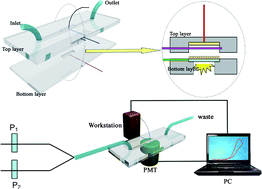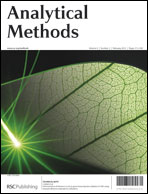Monitoring of bovine serum albumin using ultrasensitive electrochemiluminescence biosensors based on multilayer CdTe quantum dots modified indium tin oxide electrodes†‡
Abstract
A novel method for the determination of bovine serum albumin (BSA) is proposed based on the electrochemiluminescence (

- This article is part of the themed collection: Future Electroanalytical Developments

 Please wait while we load your content...
Please wait while we load your content...